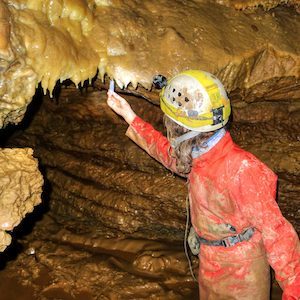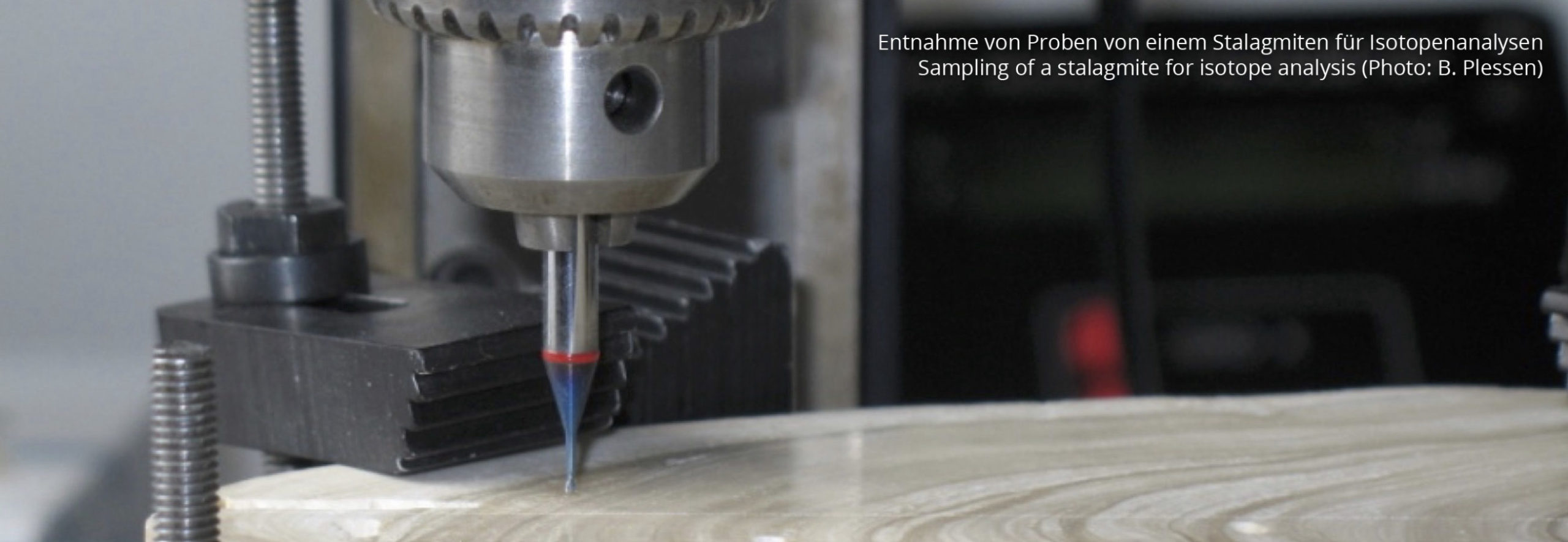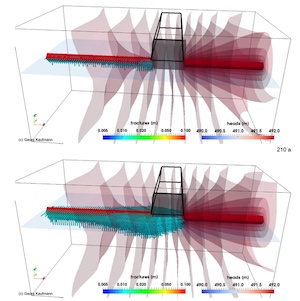Publications
2022

Marwan, Norbert
Bleßberghöhle – Schatzkammer für die Wissenschaft Presentation
15.06.2022, (VdHK-Symposium: Wissenschaft unter Tage – Höhlenforschung im Dialog, Truckenthal (Germany)).
BibTeX | Tags: abrupt climate change, bacteria, chronology, climate zone shift, karst development, microbiology, morphology, palaeoclimate, pik, stalagmite
@misc{marwan2022,
title = {Bleßberghöhle – Schatzkammer für die Wissenschaft},
author = {Norbert Marwan},
editor = {VdHK-Symposium: Wissenschaft unter Tage – Höhlenforschung im Dialog, Truckenthal (Germany)},
year = {2022},
date = {2022-06-15},
urldate = {2022-06-15},
note = {VdHK-Symposium: Wissenschaft unter Tage – Höhlenforschung im Dialog, Truckenthal (Germany)},
keywords = {abrupt climate change, bacteria, chronology, climate zone shift, karst development, microbiology, morphology, palaeoclimate, pik, stalagmite},
pubstate = {published},
tppubtype = {presentation}
}
2020
Kaufmann, Georg; Romanov, Douchko
Modelling long-term and short-term evolution of karst in vicinity of tunnels Journal Article
In: Journal of Hydrology, vol. 581, pp. 124282, 2020.
Abstract | Links | BibTeX | Tags: fub, karst, karst development, model, morphology
@article{Kaufmann2020,
title = {Modelling long-term and short-term evolution of karst in vicinity of tunnels},
author = {Georg Kaufmann and Douchko Romanov},
doi = {10.1016/j.jhydrol.2019.124282},
year = {2020},
date = {2020-02-01},
journal = {Journal of Hydrology},
volume = {581},
pages = {124282},
abstract = {Tunnel construction offers unique insights into the interior structure of rock massifs. Soluble rocks encountered during tunnel construction, however, pose a substantial challenge. Especially classical karst rocks such as limestone, dolostone, gypsum, and anhydrite are unpredictable during tunnel excavation. The enlarged voids created by the long-term dissolution of the soluble rocks in contact with water pose risks because of possible uncontrollable water inflow and of instability of the encountered cave voids, which often requires expensive remediation measures. We model the long-term development of karst features and the evolution of phreatic and epi-phreatic caves below the Schalkau Plateau in the Triassic limestone with a numerical karst evolution model. With hydrological boundary conditions derived from local meteorological data and karst springs, and a simplified model of the local lithology, our model predicts the increase in secondary permeability in the karst aquifer. Enlarged fracture zones develop at locations, where cave systems have been explored. Thus our long-term evolution model can successfully predict karst features in the Schalkau Plateau. Applying the karst evolution model on a short-term period, we assess the effect of consolidation measures taken to stabilise the tunnel cross section in vicinity of the Bleßberg Cave and its longer-term stability. Our model results suggest that flow through the cave section beneath the tunnel, which has been filled with concrete and blocks, is blocked and that during flood events the impounded water will accelerate the development of by-passes around the artificial infill.},
keywords = {fub, karst, karst development, model, morphology},
pubstate = {published},
tppubtype = {article}
}
2019
Kaufmann, Georg; Romanov, Douchko
Karst and trains: The challenge of railway tunneling Proceedings Article
In: Geophysical Research Abstracts, pp. EGU2019-3554, 2019.
Abstract | Links | BibTeX | Tags: fub, karst, karst development, model, morphology
@inproceedings{kaufmann2019egu,
title = {Karst and trains: The challenge of railway tunneling},
author = {Georg Kaufmann and Douchko Romanov},
url = {https://bbh.pik-potsdam.de/wp-content/uploads/2021/04/EGU2019-3554.pdf},
year = {2019},
date = {2019-04-08},
booktitle = {Geophysical Research Abstracts},
volume = {21},
pages = {EGU2019-3554},
abstract = {Tunnel construction offers unique insights into the interior structure of landscapes. Soluble rocks encountered during tunnel construction, however, pose a substantial challenge. Especially classical karst rocks such as limestone, dolomite, gypsum, and above all anhydrite, are unpredictable during tunnel excavation. The enlarged voids created by the long-term dissolution of the soluble rocks in contact with water and the hydration of anhydrite with the sub-sequent precipitation of gypsum during the drilling pose risks because of possible uncontrollable water inflow and of instability of the encountered cave voids, which often requires expensive remediation measures.
We report on a high-speed railway tunnel in Germany along the line Berlin-Munich. The Blessberg-Tunnel, about 8,3 km long, mainly traverses Ordovician quarzites and shales, but along its southern end it crosses the Frankonian line, a major fault zone, with Triassic limestones on the southern part of the fault. Here, a substantial active water cave, the Blessberg Cave, has been encountered during tunnel construction.
We attempt to explain the karst features along the Frankonian line, the evolution of active water caves in the Triassic limestones south of the fault, and try to assess the effect of consolidation measures taken to stabilise the tunnel cross section in vicinity of the cave and its longer-term stability.},
keywords = {fub, karst, karst development, model, morphology},
pubstate = {published},
tppubtype = {inproceedings}
}
We report on a high-speed railway tunnel in Germany along the line Berlin-Munich. The Blessberg-Tunnel, about 8,3 km long, mainly traverses Ordovician quarzites and shales, but along its southern end it crosses the Frankonian line, a major fault zone, with Triassic limestones on the southern part of the fault. Here, a substantial active water cave, the Blessberg Cave, has been encountered during tunnel construction.
We attempt to explain the karst features along the Frankonian line, the evolution of active water caves in the Triassic limestones south of the fault, and try to assess the effect of consolidation measures taken to stabilise the tunnel cross section in vicinity of the cave and its longer-term stability.
2009
Benedikt, J.; Spöndlin, D.; Kind, B.
Investigation of Karst Phenomena and Measures in the Blessberg Tunnel Proceedings Article
In: ISRM Regional Symposium - EUROCK 2009, Cavtat, Croatia, 2009.
Abstract | Links | BibTeX | Tags: morphology, tectonics
@inproceedings{benedikt2010,
title = { Investigation of Karst Phenomena and Measures in the Blessberg Tunnel},
author = { J. Benedikt and D. Spöndlin and B. Kind},
url = {https://onepetro.org/ISRMEUROCK/proceedings/EUROCK09/All-EUROCK09/ISRM-EUROCK-2009-010/38501},
year = {2009},
date = {2009-10-29},
booktitle = {ISRM Regional Symposium - EUROCK 2009, Cavtat, Croatia},
abstract = {The 8,341–m–long Blessberg Tunnel is part of Deutsche Bahn's 190-km–long high-speed railway line between Nuremberg and Erfurt. The southern section of the Tunnel is situated in mainly karstified Muschelkalk rock strata over a length of some 430 m, with the overburden from the tunnel crown to the surface ranging from 6 m to 70 m. In the course of the conceptual design, a comprehensive exploratory programme was carried out for this tunnel section, including 7 core drillings as well as geophysical investigations (geoelectrics, refraction seismics and reflection seismics). During excavation of the top heading, large karst cavities with widths of up to ten metres were encountered. The karst cavities were found to be part of an approx. 500–m–long cave. Further huge karst cavities were encountered with an overburden of about 8 m above the tunnel crown.},
keywords = {morphology, tectonics},
pubstate = {published},
tppubtype = {inproceedings}
}

